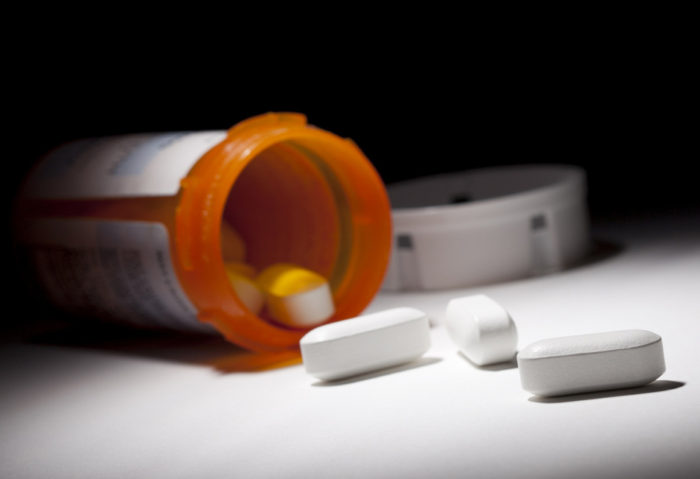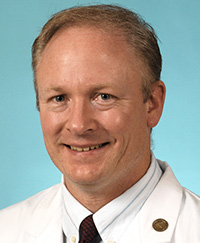Tackling treatment-resistant depression
Doctors are providing new options for individuals with major depression who are resistant to traditional treatment

Approximately 15 percent of all Americans and 25 percent of American women experience a depressive episode at some point in their lives that is severe enough to interfere with their ability to function.
The good news is that most individuals with major depression are able to find a treatment, or a combination of treatments, that will make them better. The bad news is that a significant number won’t. They have a severe form of the disorder that’s referred to as treatment-resistant depression. It’s characterized by ongoing severe depressive symptoms such as low mood, decreased energy and appetite, disrupted sleep, feelings of hopelessness and impaired concentration.
“It’s not known exactly how many depressed patients have a treatment-resistant form of the illness,” says Charles Conway, MD, a Washington University psychiatrist at Barnes-Jewish Hospital. “But recent studies estimate between 15 percent and 30 percent of those with depression have a form of the disorder that is unlikely to respond to standard antidepressant medication or psychotherapy.”

Conway directs Washington University’s Treatment Resistant Depression and Neurostimulation Clinic at Barnes-Jewish Hospital. In addition to Conway, the clinic team of physicians includes Yvette Sheline, MD; Pilar Cristancho, MD; and Dragan Svrakic, MD, PhD.
The first course of treatment is medication and psychotherapy. Often it will take a combination of two or more drugs before symptoms improve. But when medicine has been tried and hasn’t worked over the course of several months or years, physicians can refer patients to the clinic for more intensive forms of therapy.
“There are a number of options for patients who aren’t helped by medication,” says Sheline, a professor of psychiatry. “We work closely with referring psychiatrists to get patients into other treatments that may be more effective.”
Nerve stimulation
One treatment showing great promise is vagus nerve stimulation (VNS), in which a device is surgically implanted under the skin on a patient’s chest. A wire is threaded under the skin to connect the device to the left vagus nerve, which runs from the brain through the neck to the chest and abdomen. Once activated, the devices deliver a 30-second electronic stimulus to the vagus nerve every five minutes.
The VNS device was approved by the Food and Drug Administration as a treatment for epilepsy more than a decade ago; VNS also has had FDA approval as a treatment for depression since 2005.
How VNS works is not completely understood; however, in a recent study, Conway’s team followed 13 people with treatment-resistant depression whose symptoms had not improved after many months of treatment with as many as five different antidepressant medications. Most had been depressed for at least two years, but some patients had been clinically depressed for more than 20 years.
All study participants had surgery to insert a vagus nerve stimulator. Eventually, nine of the 13 subjects experienced improvements in depression. In most cases, however, it took several months for the improvements to occur.
Remarkably, in those who responded, PET imaging scans showed significant changes in brain metabolism following only three months of stimulation—several months before their clinical symptoms improved.
“It’s almost as if there’s an adaptive process that occurs,” Conway says. “First, the brain begins to function differently. Then, the patient’s mood begins to improve.”
Overall, about one-third of VNS patients have a dramatic reduction in their symptoms, and many are able to reduce the amount of medication they take.
Magnetic and other stimulation
Other clinic patients receive a different sort of treatment called repetitive transcranial magnetic stimulation (TMS). This treatment involves several weeks of daily clinic visits in which the patient sits in a chair and a powerful magnet is positioned above the scalp so that a high-energy magnetic pulse can be aimed at particular brain regions. As the magnet pulses for 20 or 30 minutes, it stimulates the cortex, or outer layer of the brain; it is thought that by exciting the cortex, TMS leads to relief from depression. Normally, it takes several weeks before symptoms improve.
“Most clinicians think of it as a treatment for patients who are mildly to moderately ill,” Conway says. “It’s a good alternative to more invasive forms of therapy, for patients who cannot tolerate medications and for pregnant women who want to avoid taking psychotropic drugs during their pregnancy.”
And for those patients who don’t respond to other therapies, electroconvulsive therapy (ECT) remains the gold standard. Although ECT has an unmatched success rate as an acute treatment in treatment-resistant depression, it does have some downsides: It requires anesthesia, and the antidepressant effects tend to be short lived if the patient doesn’t receive sustained ECT treatments, so ECT must be repeated periodically.
Another potential therapy is deep-brain stimulation, which involves the placement of very thin electrodes into specific brain regions. Currently, the treatment is FDA-approved for compassionate use in severe obsessive compulsive disorder (OCD) that has not responded to treatment. But studies are underway to determine whether it also might be effective in treatment-resistant depression.
The bottom line, Sheline says, is that the clinic provides patients with a number of potential therapies. “Don’t give up,” she says. “We have so many more options today. It’s more likely than ever before that we will have something that can help.”






